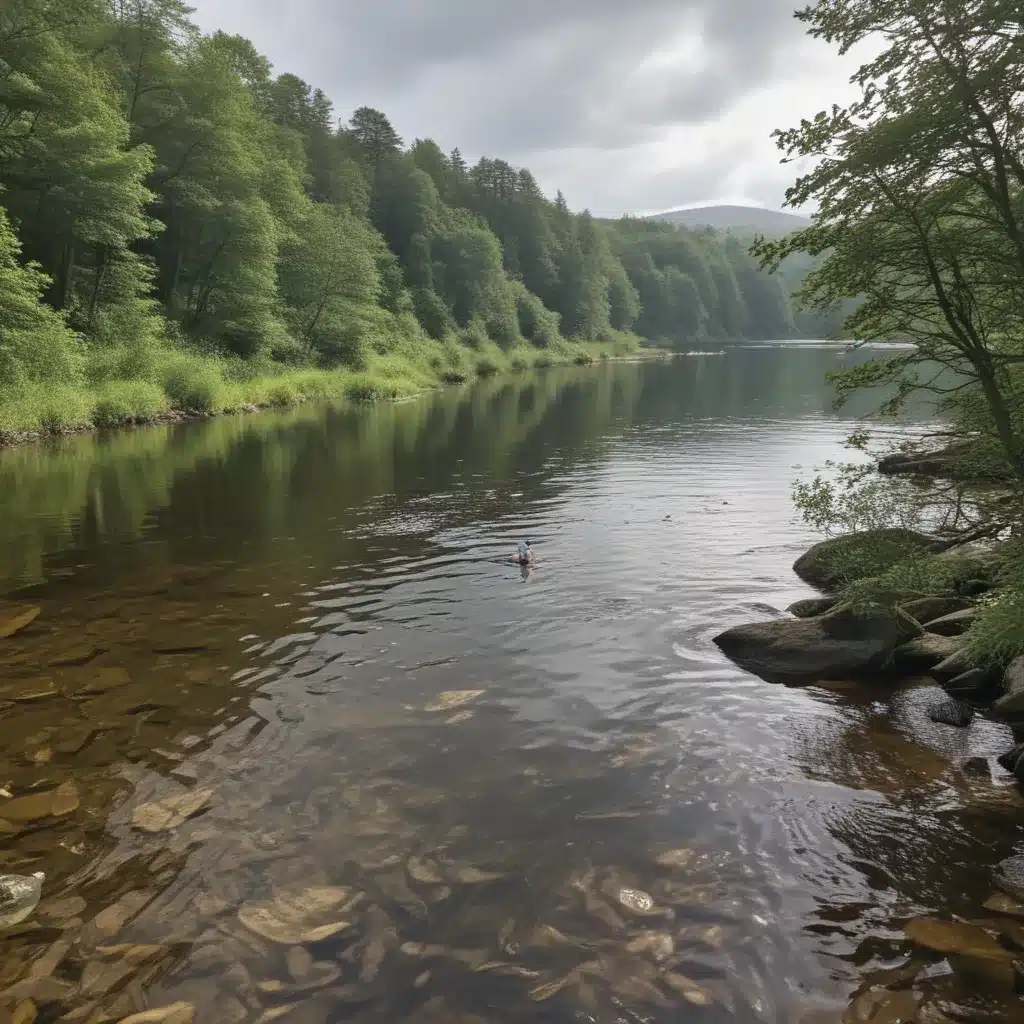
Plunging into the Chilly, Yet Captivating Waters of the Highlands
As a proud Highlander, I’ve always had a deep appreciation for the natural beauty that surrounds me. From the towering mountains to the glistening lochs, the Scottish Highlands offer a breathtaking playground for adventure seekers and nature enthusiasts alike. And one activity that has particularly piqued my interest in recent years is the thrilling pursuit of wild swimming.
Now, I know what you’re thinking – isn’t wild swimming just a fancy term for jumping into freezing cold water? Well, my friends, there’s much more to it than that. Wild swimming is a true sensory experience, one that allows you to immerse yourself in the untamed beauty of Scotland’s waterways, all while reaping the incredible mental and physical benefits that come with it.
Loch Ness Shores, our very own campsite nestled in the heart of the Highlands, serves as the perfect base for those looking to embark on a wild swimming odyssey. But before you dive in, it’s crucial to understand the safety considerations that come with this exhilarating activity.
The Challenges of Wild Swimming in Scotland
Wild swimming in Scotland is not for the faint of heart. Our lochs and rivers are fed by glacial meltwater, which means the water temperature can be downright bone-chilling, even on the warmest of summer days. In fact, the average temperature of Loch Ness, one of the most famous bodies of water in the Highlands, hovers around a bracing 5 degrees Celsius (41 Fahrenheit) year-round.
Now, I know what you’re thinking – that’s way too cold for any sane person to swim in, right? Well, not exactly. While the frigid temperatures of our lochs and rivers can certainly be a shock to the system, there are ways to safely enjoy the experience and reap the numerous benefits that wild swimming has to offer.
Mastering the Art of Cold Water Acclimatization
The key to successful and safe wild swimming in Scotland lies in the process of cold water acclimatization. This involves gradually exposing your body to the chilly temperatures, allowing it to adapt and become more resilient over time. It’s not something that happens overnight, but with a little patience and perseverance, you can train your body to handle the cold and truly embrace the thrill of wild swimming.
One of the best ways to start the acclimatization process is by gradually increasing the duration of your immersion. Begin by simply dipping your toes in the water, then work your way up to submerging your entire body. Start with short sessions, maybe just a minute or two, and gradually increase the time as your body becomes more comfortable with the cold.
Another helpful tip is to pay close attention to your body’s reactions. If you start to feel the telltale signs of cold water shock, such as rapid breathing, muscle cramps, or a sudden drop in body temperature, it’s time to exit the water immediately. Safety should always be the top priority when it comes to wild swimming.
Discovering the Gems of the Highlands
Now that you’ve got the basics of cold water acclimatization down, it’s time to start exploring the incredible wild swimming spots that the Scottish Highlands have to offer. And trust me, there are plenty to choose from!
One of my personal favorites is Loch Duntelchaig, just a short drive from Loch Ness Shores. This freshwater loch boasts crystal-clear waters and a rocky bottom, making it a prime destination for snorkeling and swimming. The scenery surrounding Loch Duntelchaig is nothing short of breathtaking, with rolling hills and ancient forests creating a truly serene and enchanting atmosphere.
Another hidden gem that’s worth a visit is Loch Ceo Glais, which is known as the warmest loch in the Highlands. While it may not be as chilly as some of its counterparts, the stunning views and tranquil atmosphere make it a must-visit for any wild swimming enthusiast.
If you’re feeling particularly adventurous, you could even try your hand at one of the local swimming events, such as the Loch Ness swim or the Kessock Swim Event. These challenging, yet exhilarating experiences allow you to truly test your limits and push the boundaries of what you thought possible.
Staying Safe and Enjoying the Adventure
At the end of the day, wild swimming in Scotland is all about finding the perfect balance between adventure and safety. It’s about embracing the natural beauty that surrounds us, while also being mindful of the potential risks and taking the necessary precautions to ensure a safe and enjoyable experience.
Whether you’re a seasoned wild swimmer or a complete newcomer, the key is to always put safety first. Invest in the right gear, such as wetsuits and tow floats, and never underestimate the power of the water. Follow the “float to live” technique recommended by the RNLI, and always be aware of your surroundings and the changing conditions of the water.
Most importantly, don’t be afraid to start small and take your time. The beauty of wild swimming in Scotland is that there’s no one-size-fits-all approach. It’s a personal journey, and the more you immerse yourself in it, the more you’ll discover the true magic and wonder of these captivating waterways.
So, what are you waiting for? Pack your swimsuit, grab your tow float, and get ready to embark on a wild swimming adventure like no other. The chilly, yet captivating waters of the Scottish Highlands are waiting to be explored!

